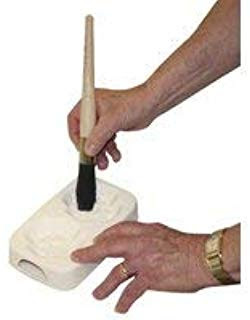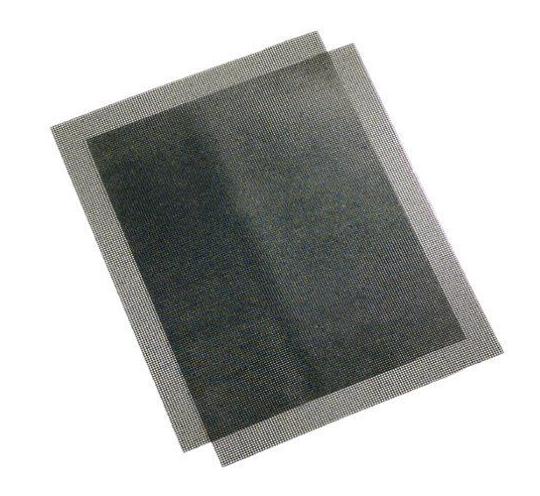Does the size of the rim affect the amount of dog boning when slumping rectangular items?
This question was prompted by previous testing on the amount
of distortion by adding additional elements. I found that single layer pieces
stacked 15mm/0.6” or more from the edge do not affect its shape.
This led me to think: “how wide a rim would be required to
avoid dog boning of rectangular pieces while slumping?” The premise was that
there must be some relation to the width of the rim and the amount of dog
boning.
Method
The method I chose was to make two vermiculite moulds. One with an almost square aperture and the other with a rectangular one. These were not large pieces.
- One was 27cm by 22cm/ 10.6” by 8.66” with an opening of 10cm by 10.5cm/4” by 4.12”.
- The other was 25cm by 22cm/9.84” by 25cm/8.66” with an opening of 19.5cm by 13cm/7.68” by 5.1”.
- Both had a drop of 25mm/1”.
The sizes of the rim were proportional to the opening of the
mould. The remainder of the mould was merely a support to the rim.
The firing schedule for all pieces was kept the same.
- Ramp 1 220˚C/396˚F to 677˚C/1252˚F hold for 1.75 hrs
- Ramp 2 Full to 482˚C/900˚F hold for 1.0 hours
- Ramp 3 83˚C/150˚F to 427˚C/800˚F Hold for 0 hours
- Ramp 4 150˚C/270˚F to 371˚C/700˚F Hold for 0 hours
- Ramp 5 300˚C/540˚F to 50˚C/122˚F Off
Results for single layer slumping
Various widths of single layer rim were tested from 1cm/0.4”
to 3cm/1.18” at 2.5cm/1” deep. The 2cm/0.79” rim was also tested at 3cm/1.18”
and 3.8cm/1.5” deep.
Square openings
The results showed there is no further reduction in dog
boning with rims greater than 2cm/0.79” for square apertures of this size. The
dog boning of a 1cm/0.4” rim was 1.5mm/0.6”. The amount of deflection from
straight was 0.5mm/0.02” for both 2cm/.079” and 3cm/1.18” rims.
There was no effect of increasing the depth of the slump to 3.8cm/1.5”
on a 2cm/0.79” rim.
Rectangular openings
The results were different for slumps into rectangular apertures.
The glass on the long side of the opening had greater dog boning at all rim
widths from 1.25cm/0.5” to 3cm/1.18” than the shorter side.
- · A 1.25cm/0.5” rim deformed 3mm/1.18” on the long side and 2.5mm/0.98” on the short one.
- · With a 2.5cm/1.0” rim the deformation on the long side was 2.5mm/0.98”. The short side of the opening was 1.5mm/0.6”.
- · A rim of 3cm/1.5” deformed 1mm/0.02” on the long side. The short side of the opening deformed 0.5mm/0.02”.
Results for Two Layer Slumping
The big surprise for me was the greater amount of dog boning
on the slumping of two layers. I expected less.
The two-layer slumping was done on the same moulds with the
same schedule. The results of greater rim widths showed gradual reductions in
the amount of dog boning. But there was significant sensitivity to the difference
in the square opening.
Square Opening
The square opening is only slightly rectangular by 5mm/0.02” but the 6mm/0.25” glass reacted to that small difference. The amount of dog boning with a 2cm/0.79” rim was 4.5mm/0.18” on the long side. But 2mm/0.18” on the side only 5mm/0.02” shorter.
This amount of dog boning reduced gradually
until with a 5cm/2” rim the deflection was 3mm/0.12” on the long side. The deflection
was too small to measure on the short side.
Rectangular openings
The rectangular
opening was 1.5 times longer than wide. This had significant effects on the
extent of dog boning. Although increasing the rim width did reduce the
deformation, the long side continued to exhibit greater deformation than the
short one.
- · With a
3cm/1.5” rim, the long side deformed by 4.5mm/0.12”. The short side by 3.5mm/0.14”.
- · A rim
of 3.5cm/ reduced the deformation to 4mm/0.16 on the long side. But 2mm/0.08”
on the short side.
- · At 4cm/1.57”
the rim deformed 2mm/0.12” on the long side and 1mm/ on the short one.
- · Strangely,
a 4.5cm/1.77” rim had a little larger deformation than the 4cm/1.57” rim. It
was 3mm/0.12” on the long and 2mm/0.08” on the short side. It may be that the greater
length of the rim contributed to increased dog boning.
A general reflection on the two-layer tests.
It is possible
that there was too long a hold at 677c for 6mm. I did not do a check on the
time it took to reach full slump. The long soak was required to get the single
layer to conform to the mould. At the time, my requirement was to keep the
firing of single and double layer slumping the same for comparison. Perhaps keeping
that hold constant was the wrong decision. Further testing will be required.
Summary
I learned some things from these (incomplete) tests that I
did not expect. This is good for my learning. The things I found out are:
- · In general, the wider the rim is, the less dog boning occurs.
- · The extent of dog boning is more sensitive to the dimensions of the opening than to the size of the rim for both single and double layers.
- · The depth of the slump of a single layer has less influence than the size of the rim. Once the rim is of sufficient size to minimise the dog boning, the increase of the depth by 20% or 50% did not affect the dog boning.
- · Thicker glass with the same schedule deforms more than single layers. This does need more investigation, though.
More Informaton:
The basic cause of dog boning is related to volume control.
The causes of dog boning other than volume control.
More about the effects in slumping.
Much more information is available in the eBook Low Temperature Kilnforming.









